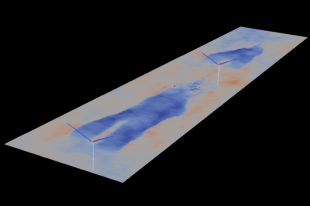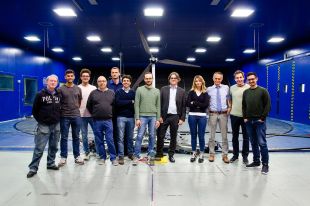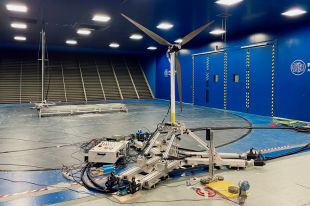
Thanks to floating technology, it will be possible to install wind turbines in the waters of the deepest seas, such as the Mediterranean. The greater flexibility of use offered by floating foundations is accompanied by several challenges that must be overcome to build wind farms based on this technology.
Wind turbines, by absorbing power from the wind, leave behind a wake where the wind is more turbulent and has a reduced amount of energy. Wakes affect the other turbines in the wind farm, reducing their power output and increasing the mechanical stresses to which they are subjected. The rotor of a turbine installed on a floating foundation is subject to much greater movements than when using a classic foundation fixed to the seabed. These movements change the way the wake behind the turbine rotor is created and how it develops. In the floating wind farms of the future there will be hundreds of turbines, ideally working close together to maximize the power produced in a sea area. This will accentuate the effects of wakes, making it increasingly important to understand and control them.
The objective of the NETTUNO project is to develop tools to predict and control wakes of floating wind turbines. The project involves researchers from University of Florence and Politecnico di Milano, who will synergistically combine two wind tunnel experiments and numerical simulations to advance the state-of-the-art in floating wind technology.
The first experiment, recently concluded, studied the wake of a scale model of a 15MW wind turbine subjected to movements that normally occur in a floating machine when it is subjected to ocean waves. The motion of the floating platform and the waves of the sea are not present in the wind tunnel, but are reproduced with a specially designed robot. In the coming months, the project plans to conduct a second experiment where a twin turbine will be installed behind the first one. In this way, it will be possible to study the forces produced by the wake of the upwind turbine on the rotor of the downwind turbine, and this will make it possible to understand the degree of stress to which wind turbine components are subjected in a floating wind farm.
The information gathered in the wind tunnel will be used to develop numerical tools that will allow the study of wake interactions in floating wind farms with different objectives and degrees of detail. These will range from the simulation of mechanical loads under hundreds of operating conditions to the study of the fluid-dynamic structures that originate when a turbine rotor moves in the wind. The data produced by the simulations and those collected in the experiments will be made available to the scientific community, filling a gap that currently exists in research on the topic of floating wind power.



